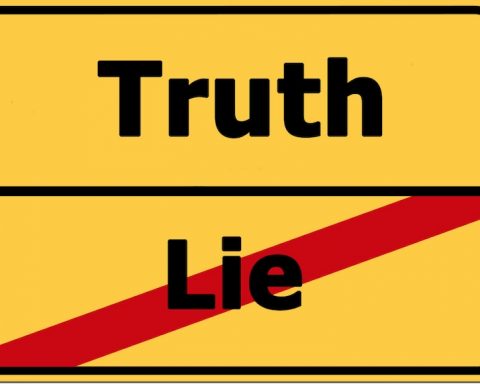Although the above photograph may be well known to most of us due to its appearance in the Gibraltar issue of the noted publication, After the Battle, few people may know that a squadron of as many as 12 tanks were stationed here during WWII. This unit was attached to 2nd Gibraltar Brigade for operational purposes and was aptly named The Gibraltar Tank Squadron R.A.C (Royal Armoured Corps). Even though the operational life span of this squadron was short and thankfully uneventful it nevertheless provides an interesting addition to Gibraltar’s wartime history.
Though the unit was officially formed on the 12th March 1943, its origins date back to well before this time as apparently the Governor, General Sir Clive Liddell, sent a request to the War Office in London on the 13th June 1941 to supply an unknown number of infantry tanks for use in Gibraltar. This is, as far as I know, the first time a need for these weapons was required by the Garrison. The War Office in turn turned down the request stating none were available for some months and instead dispatched six Ironsides (wheeled armoured cars) plus spares though without any trained drivers. Britain was indeed in dire straits at this stage of the war.
The next time we find a mention for Tanks in War Office Records is on 13th June 1942 as part of a Chiefs of Staff Committee meeting held in London with General Mason McFarlane. At this meeting he requests for the provision of ten to twelve Churchill Infantry Tanks for the Gibraltar Garrison. This request was thankfully denied by the War Office as these machines weighing over 39 tonnes and with a long chassis would have been virtually inoperable on the Rock.
The Garrison had to wait until September 1942 for ten Valentine MKIII infantry tanks to arrive. These tanks comprised of a crew of four, weighed over 16 tonnes, were armed with a puny two pounder main gun and were already becoming obsolete in the face of German tank developments. The reason for them to reach Gibraltar at this particular time was no coincidence, the invasion of North Africa, Operation Torch, was about start and the military authorities wanted to reinforce the Garrison in case there were any retaliatory attacks from Spain. These tanks along with four Officers and seven Other Ranks disembarked from the S.S. ITTERSUM on the 27th September and were taken over by No.71 Section RAOC (Royal Army Ordnance Corps) in order to be mechanically overhauled. Selected members of the 2nd Battalion Somerset Light Infantry, also part of 2nd Gibraltar Brigade, had already been attending Driver & Maintenance courses preparatory to taking command of the tanks as soon as they arrived. An interesting entry in the 2nd Gibraltar Brigade War Diary for 10th October 1942 reads “ trials with one Valentine MKIII at Napier Railway Tunnel to discover whether tunnel would allow passage of tanks through it or whether any R.E. work was required”. No further indication is given whether the tank went through or not.
On its formation the Squadron’s initial strength was Officers 4, NCOs 10 and Troopers 28. The unit was divided into four troops; each one consisted of three tanks and was divided as follows;
- HQ Troop Captain J.L. Adams, Commanding Officer.
- No. 1 Troop. Lieutenant H.G. Wilkes, Unit Fire Fighting and Arms and Ammunition Officer.
- No. 2 Troop. Lieutenant L.W. Sanders, Unit Transport and Weapon Training Officer.
- No. 3 Troop. Lieutenant O.A. Ellis, 2nd in Command and Technical Adjutant
Three of the above officers, Capt. Adams, Lieut. Wilkes and Sanders were transferred along with twenty four other ranks from the Somerset Light Infantry Regiment which were based at Buena Vista Barracks. The initial accommodation area for the Squadron is unknown although later in August they were located at Kingsway in the Alameda. (now beneath Alameda and Kingsway House)
‘Squadron Standing Orders’ were issued to all officers and were displayed in the Squadron Office. These orders stated the various directives for the unit and covered diverse subjects.
These ranged from discipline to the speed limit set for the tanks. I find these instructions very interesting as they convey a glimpse of how the soldiers lived and how the tanks were operated.
Here are some examples;
Dress
‘On all parades with tanks overalls or denims will be worn.’
‘The R.A.C. black beret with badge will be worn.’
Tanks
‘Smoking is not permitted when working on or travelling in tanks. Riding outside is forbidden unless intercom system has broken down. Passengers will not be carried on or inside tanks.’
‘If roads or paths are damaged tank crews will do their best to make good the damage by using shovels on tanks before proceeding.’
Bounds
‘Unless otherwise ordered by the Squadron Leader all roads on the UPPER ROCK (that is, roads leading from EUROPA RD to WINDMILL HILL, to area of GOVERNOR’S COTTAGE, to QUEENS RD, to MOORISH CASTLE) are definitely out of bounds for all tanks.
Other areas out of bounds.
- SCUD HILL.
- All playing fields.
- All barrack squares.
- ALAMEDA SQUARE.
- CASEMATES SQUARE.
- AERODROME.
- ROAD TO SPAIN across AERODROME.
- EASTERN BEACH (only allowed with permission from F.H.Q.
- R.A.F. RECLAMATION area.
- All dock areas.
- MAIN STREET from WATERPORT to CASEMATES.
- EUROPA POINT and BREWERY BARRACKS area (the latter may be used when tanks are firing only).
In Bounds
Training runs will be confined to main roads in EUROPA, ROSIA, TOC.H, ALAMEDA, RECLAMATION RD, CASEMATES and CATALAN BAY areas.’
As can be seen above, the restrictions imposed on the movement of the Squadrons Tanks due to Gibraltar’s geography limited their usefulness in any combat situation.
For reasons unknown, the unit’s war establishment was increased during July and August 1943 with the formation of No. 4 and 5 Troop. This establishment only lasted till the end of August of that same year when No. 4 and 5 Troop were dissolved and the squadron reverted to four Troops:
HQ, 1, 2 and 3. Each Troop was now equipped with Valentine MKIX. These tanks were an improved version with the larger 6 pounder quick firing gun in the same turret. As a consequence the crew was reduced to three adding the responsibility of loading the gun, to the commander. I have not been able to find any exact dates as to when they were exchanged but what is known is that the Squadron carried out a first shoot seaward with the new models on 4th Aug. 1943 and that on the 6th Sep. 1943 the twelve 2pdr armed Valentines were loaded onto cargo ships here on the Rock and transported to Portugal. The main role for the new up gunned versions was now as mobile anti tank artillery and in support of infantry involved in any counter attack against an enemy invasion.
In September 1943 a cadre for training infantry to man the tanks was commenced. This was primarily in the event the squadron was ever re-armed in the future.At this point it is wise to mention that the War Office had decided, following a report by the Defence of Bases Committee, to reduce the Garrison strength by half. This was as a result of the need for troops for the Italian campaign and the reduced threat of a German attack through Spain. Indeed so great was need for equipment and personnel for this new theatre of operations that the Royal Armoured Corps (RAC) had the intention of transferring all tanks to form a reconnaissance squadron as part of the 4th Infantry Division. This idea was rejected by the War Office on the recommendation of the Governor, General Sir Mason McFarlane, who stated that the Gibraltar Tank Squadron was unsuitable for this role either because of the lack of combat experience of its personnel or the obsoleteness of its equipment. The Governor reluctantly agreed to the reduction of the Garrison including the Tank Squadron but in turn requested that “since I wish in occasions to be able to man and drive up to 1 section of 3 tanks in order to demonstrate both to the Garrison and neighbours that they remain in commission I retain:-1 Officer (subaltern)
- 1 Sergeant (Mechanist)
- 2 Corporals
- 7 Troopers (including 3 Gun Operators).
This “Care & Maintenance” party or cadre was finally agreed by the War Office in a report dated December 1943. The Squadron reached a peak in October 1943 when its strength was;
- 6 Officers
- 1 WO2
- 8 NCO
- 27 Troopers
Plus Attached
- 1 NCO
- 22 Privates
The Squadron took part in various exercises in conjunction with other units of 2nd Gibraltar Brigade including the 1st Battalion Hertfordshire Regiment and 2nd Battalion Somerset Light Infantry. There were also some manoeuvres under 1st Gibraltar Brigade orders which involved No.1, 2 and 3 Troop in landing beach exercises disembarking from L.C.T.s (Landing Craft Tank). This was undoubtedly in preparation for the involvement of the squadron in a locally devised special operation against the Spanish defences on the Neutral Ground. An interesting exercise called Ajax carried out in conjunction with 1st Hertfordshire Regiment and involving two Troops (six tanks ) reveals a curious objective for the manoeuvres, “to ensure Tanks can move through AROW STREET without damaging RE or Sig Equipment located in tunnels”
Sometime between December 1943 and April 1944 we find information in other War Office records that the squadron was now equipped with twelve Sherman Tanks of an unspecified model. These were more modern American made Medium Tanks of 30 Tonnes in weight and a 75mm gun as main armament and a crew of 5. At this stage in the war they formed the mainstay of the British Armoured formations. It begs the question, why were the tanks exchanged with Shermans at this late date when the risk of attack was minimal and the priority for new equipment and shipping was for the forthcoming invasion of France?
This lead me initially to theorise that the Shermans must have come from North Africa, veterans of the desert campaigns and most probably nearly worn out. The recent discovery of an entry dated 30th Dec 1944 in a Gibraltar Garrison Quartermaster file contradicts this theory as it states that War Office authority had been granted to ship nine Sherman Tanks to another theatre of operations. This theatre is not mentioned but the likely candidate is Italy. This provides evidence that these machines must have been in nearly new condition in order to justify their costly transportation.
Nevertheless the Tank Squadron carried on its existence albeit on a caretaker role until at least September 1945 as the Order of Battle for Gibraltar Garrison still includes the Tank Squadron, Detachment only. This RAC contingent also took part in the VE (Victory in Europe) parade held locally on the 12th of May.
The fate of the three remaining tanks is clouded in mystery after the end of hostilities apart from two examples that survived at Europa Point. This fact has been confirmed by many eyewitness accounts .One of these accounts confirms that they were pushed over the cliffs into the sea, certainly before 1961, where they remained until the’ Fedra disaster’ either relocated them to deeper waters or squashed them beyond recognition. Photos of these tanks whilst on dry land have not yet been found but the search continues.
Article supplied by
History Society Gibraltar





